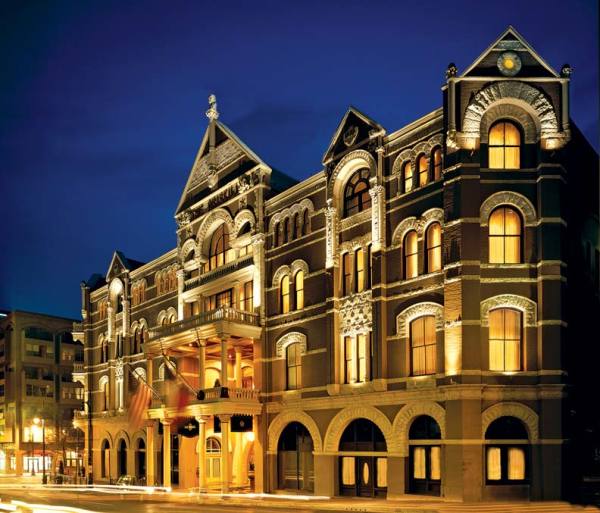
Despite many changes of hands over the years, the façade of the Driskill Hotel still looks remarkably like it did in 1885. (Photos: Courtesy of the Driskill Hotel)
They say everything’s bigger in Texas. Once you step inside the Driskill Hotel, Austin’s opulent historic landmark, you know it’s true; the grandeur just might take your breath away. Certainly, the flavor of Texas permeates every corridor.
“I think the draw really is that the hotel is so Texas,” says Kyra Coots, the Driskill’s director of public relations. The hotel’s Lone Star roots extend far beyond the longhorn head mounted above the fireplace in the bar and the five-pointed Texas stars outlined in lead on the lobby’s giant stained-glass dome.
Jesse Lincoln Driskill, a prosperous rancher who supplied beef to the Confederate Army during the Civil War, began construction on the hotel in 1885, around the same time that the Texas Capitol and first building of the University of Texas were built. Driskill’s Richardsonian Romanesque hotel, designed by Jasper N. Preston & Son, would open before Christmas in 1886, boasting 60 steam-heated guest rooms and four elaborate suites.
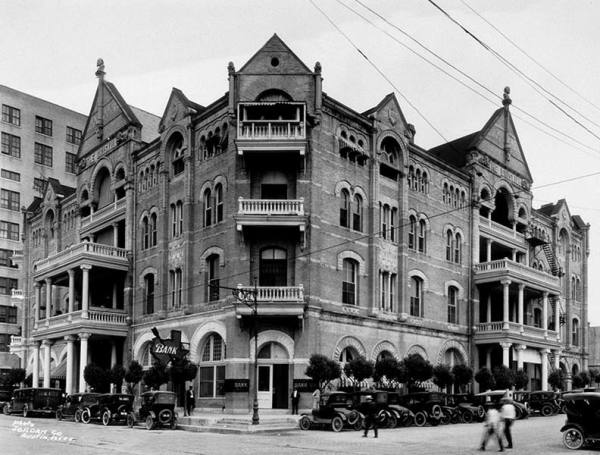
The hotel in the early 20th century.
Less than two weeks after its grand opening, the Driskill hosted what would be the first in a storied line of inaugural balls, this one for Texas Governor Sul Ross. It hosted more than 30 years of homecoming balls for the University of Texas. And in 1934, Lyndon B. Johnson invited Lady Bird to breakfast here and proposed marriage to her later that same day. In 1964, LBJ was here again when he learned he had won the U.S. presidency.
Despite the glamorous events, the hotel has long been plagued by management woes. Within months of opening, it closed due to financial troubles, reopening in October 1887 under new management. The next year, a devastating drought killed off the Driskill family’s cattle and forced them to sell the hotel. Thus began a dizzying history of closures, reopenings, and ownership and management changes that would continue for more than a century. In 1969, the wrecking ball was outside—literally—before the Heritage Society of Austin gathered sufficient private funds to save and open the hotel to guests once more. (The latest sale of the hotel, to Colorado-based Destination Hotels & Resorts, took place in 2005.)
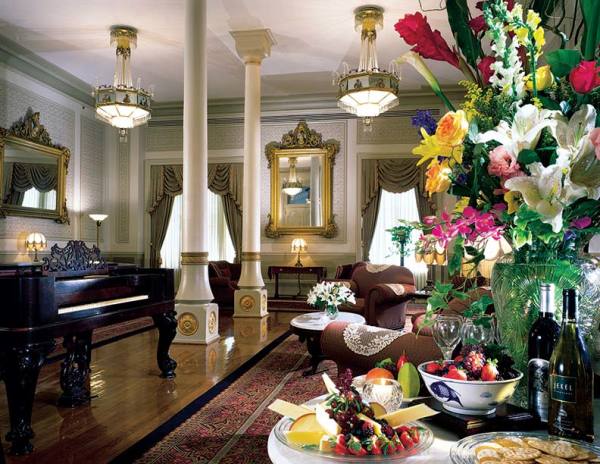
The Maxmilian Room’s famous mirrors.
“We like to say there’s a little mystery in our history at our hotel,” says Coots. That might be a way of putting a positive spin on a timeline littered with changes of hands, several renovations, and additions, but it’s true. There’s plenty of intrigue at the Driskill, especially for the history buff.
Take Texas’ own hall of mirrors, the Maximilian Room. Its standout feature is a set of eight mirrors framed in ornate gold plate, each topped with a likeness of Empress Carlota, wife of the 19th-century monarch Maximilian of Mexico. The mirrors are said to have been a gift from Maximilian to Carlota, which once hung in their own home. How they landed in a San Antonio antiques shop is unknown, but the Driskill purchased them in 1930 and made them the centerpiece of the hotel’s most fantastic ballroom. The ballroom also boasts a set of beaded chandeliers, thought to date to 1930, that were restored in the 1990s as part of a history-minded renovation.
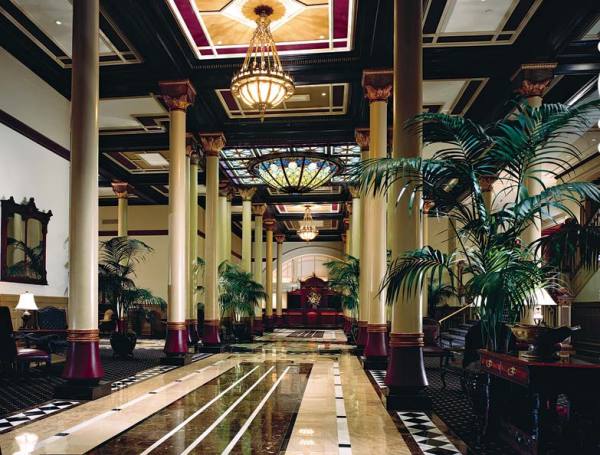
The highlight of the lobby is an inverted stained-glass dome, designed to evoke the spirit of the original atrium
Other striking interior features speak to the many changes the hotel has seen over the years. The vault near the reception desk is a remnant of the bank that opened in the hotel as part of an 1895 effort to diversify the business. And the lobby’s magnificent 18′ x 18′ stained-glass ceiling is centered around an inverted dome that was added in the 1990s to evoke the original open atrium, which was enclosed in 1950 when management installed air conditioning. Outside, the original busts of Driskill and his two sons—carved from limestone by Italian artisans—overlook each street-facing, pressed-brick façade.
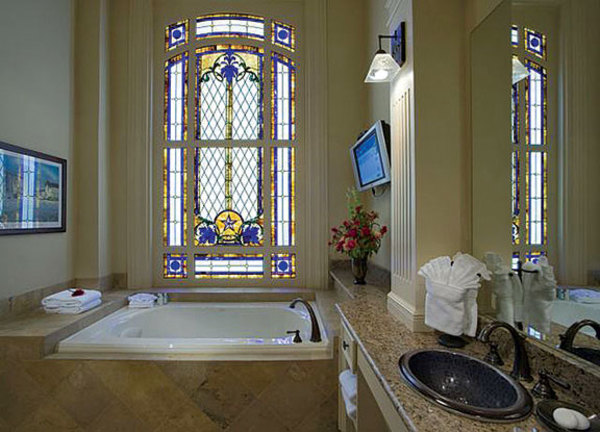
The LBJ Suite features stained glass adorned with bluebonnets and other wildflowers.
The mystery that intrigues guests the most, however, is whether the hotel is haunted. Stories abound of several ghosts. Driskill, known around the building by his military title, “The Colonel,” is the most obvious candidate. He died in 1890, just two years after selling the hotel, and is said to smoke cigars in guests’ rooms in his quest to enjoy his namesake creation. Others have reported hearing a little girl bouncing a ball and giggling near the hotel’s grand staircase, where a four-year-old fell tragically to her death in 1887. More tragedy ensued about three decades ago, when a groom called off his wedding the night before it was to take place at the hotel. The bride-to-be, who was staying in a room on the fourth floor, hanged herself. It is said that her ghost walks the halls in her wedding gown.
When he built the hotel 125 years ago, Jesse Driskill probably didn’t envision hauntings or the other mysteries that have come to the building with old age. He did envision the grandest hotel in the region—and there’s reason to believe he met that goal. Austin’s Daily Statesman touted it as “one of the finest hotels in the whole country” when it opened in 1886. Thanks to Driskill’s vision and the efforts of preservation activists, we can still enjoy his masterpiece today.







